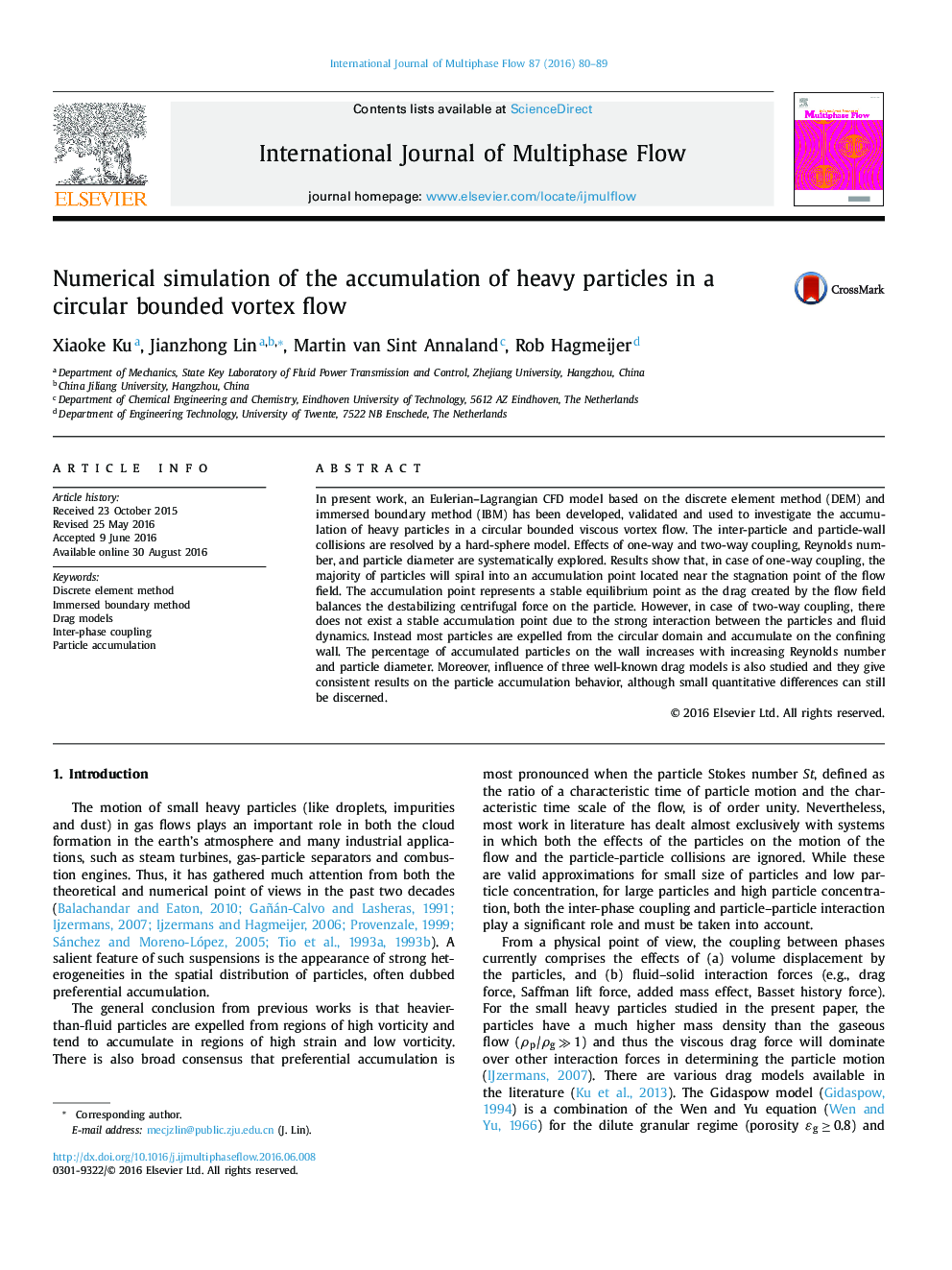| Article ID | Journal | Published Year | Pages | File Type |
|---|---|---|---|---|
| 4995065 | International Journal of Multiphase Flow | 2016 | 10 Pages |
Abstract
In present work, an Eulerian-Lagrangian CFD model based on the discrete element method (DEM) and immersed boundary method (IBM) has been developed, validated and used to investigate the accumulation of heavy particles in a circular bounded viscous vortex flow. The inter-particle and particle-wall collisions are resolved by a hard-sphere model. Effects of one-way and two-way coupling, Reynolds number, and particle diameter are systematically explored. Results show that, in case of one-way coupling, the majority of particles will spiral into an accumulation point located near the stagnation point of the flow field. The accumulation point represents a stable equilibrium point as the drag created by the flow field balances the destabilizing centrifugal force on the particle. However, in case of two-way coupling, there does not exist a stable accumulation point due to the strong interaction between the particles and fluid dynamics. Instead most particles are expelled from the circular domain and accumulate on the confining wall. The percentage of accumulated particles on the wall increases with increasing Reynolds number and particle diameter. Moreover, influence of three well-known drag models is also studied and they give consistent results on the particle accumulation behavior, although small quantitative differences can still be discerned.
Related Topics
Physical Sciences and Engineering
Chemical Engineering
Fluid Flow and Transfer Processes
Authors
Ku Xiaoke, Lin Jianzhong, Martin van Sint Annaland, Rob Hagmeijer,
